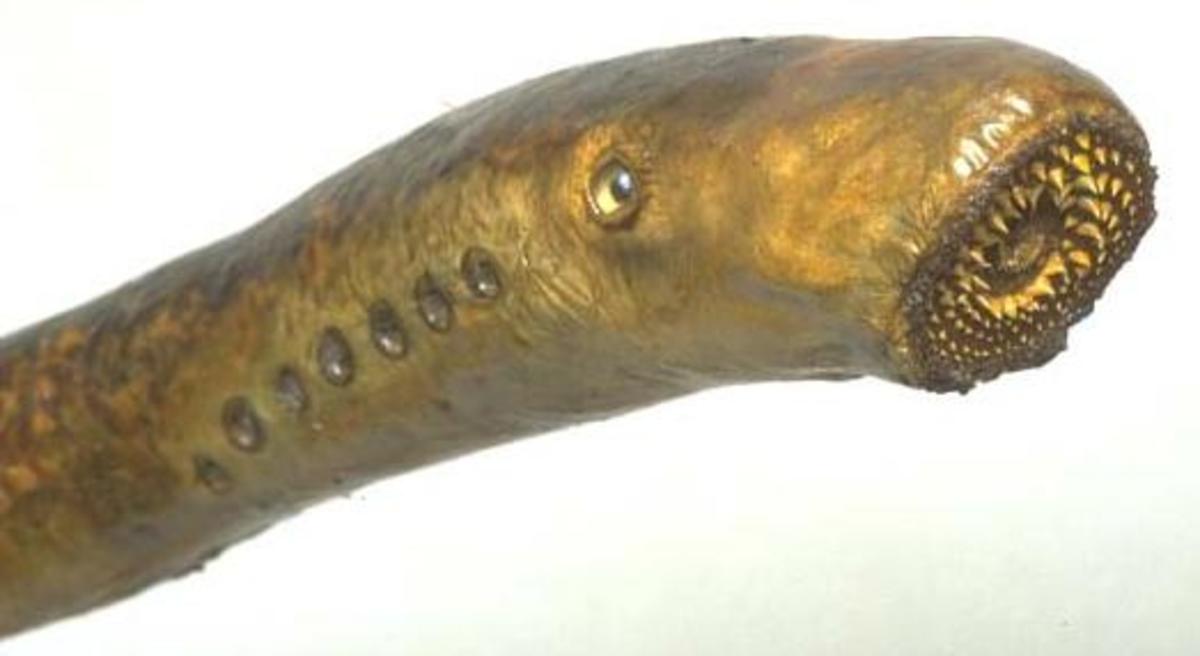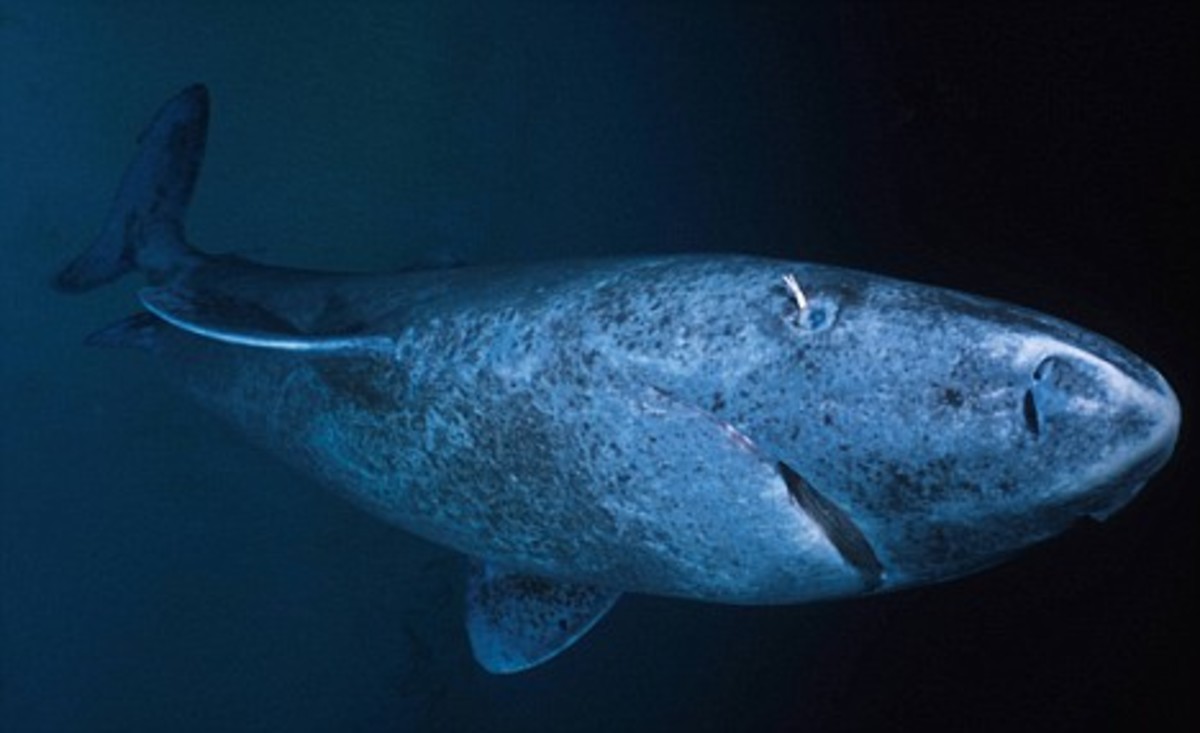Diversity Among Fish
The Lemon Shark

Is a Shark a Fish?
It depends who you ask. Sharks differ from saltwater sport fish, such as tuna, marlin, swordfish, tarpon and bonita in that they have a cartilage skeleton instead of a bony skeleton. Sharks also have a different type of very small scale, which actually feels like sandpaper and is often referred to as skin.
Another definition of fish, might put the sharks, rays, lampreys and hagfish in the same grouping with all the bony fish. If a fish is defined as a vertebrate animal that uses gills throughout its entire life to obtain oxygen, then all of the above can be seen as fish.
Taxonomy vs. Taxidermy
Taxonomy and taxidermy are two different sciences, originating from the same Greek root, "taxis". Taxis is best defined as an arrangement. In the case of taxonomy, a second Greek word, nomos, meaning law or science is incorporated the word. When these two Greek words are combined, we end up with a scientific arrangement that consists of a variety of life forms. These life forms can come in either the plant or animal form, so as a result we have the taxonomy of plants, the taxonomy of animals or any subdivision thereof, such as the taxonomy of fishes.
On the other hand, taxidermy, which is the preservation of fish and other fauna to resemble lifelike forms, combines "taxis" with another common Greek scientific term, "derma". Derma translates to English as skin and combined with taxis, results in "the arrangement of skin", a rough, but accurate explanation of what a 21st century taxidermist actually does. Within this article, we will mainly be concerned with the taxonomy of aquatic vertebrate animals.
The Lionfish
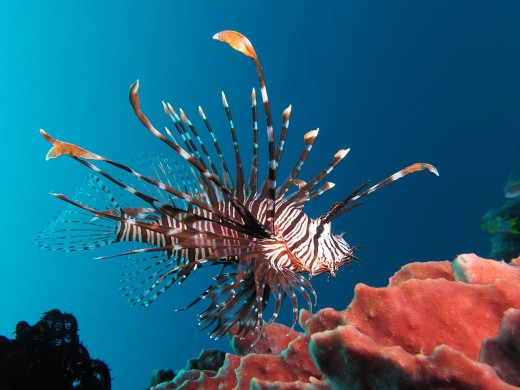
Fish As Vertebrates
The scientific classification of fish begins with the recognition that these aquatic animals are all vertebrates, which means they have a backbone. With this vital piece of information, we can place our aquatic animal in the subphyllum, Vertebrata. Since Vertebrata also includes mammals, birds, reptiles, amphibians and even mankind, we need to further differentiate the fish from the rest of the animals.
One way of doing this is by noting the presence of gills. A gill is a type of organ that allows the fishlike animal to extract oxygen from the water. This differentiates the fish from reptiles and mammals, such as turtles and whales that live in the water but must breathe air to survive.
However, when taxonomists look at the vertebrates, they divide the animals that live in the water and use gills into three different classes. Also of note, are the amphibians, another class of animals that are born with gills that change into lungs, when the animal matures.
So in order to avoid confusion, asecond set of physical characteristics are used to identify the three classes of fish.
The Three Classes of Fish
Today, all fish are usually placed into three different classes, depending on the type of skeleton they have (soft or bony) and also on whether or not they have a jaw. The biggest class of fish are called the Osteichthyes, which have both a jaw and a bony skeleton. The vast majority of sport fish fall into this category .
Next are the Chondrichthyes, which also have a jaw, but lack a bony skeleton. Instead, they have a cartilaginous skeleton. This group of primitive fish includes the sharks, rays and skates. Finally, there are the jawless fish (Agnatha), which include both the lampreys and hagfish.
Finally, it is important to note that to a taxonomist, these three classes of animals are simply a subdivision of the Vertebrata.
Some Challenges In Naming Fish

Ichthyology
However, there is one science that applies itself to the study of the three aquatic classes of vertebrates. It is called Ichthyology. This term is also derived from two Greek root words. In this case, they are ikhthus and logos. Respectively, they mean fish and study or when combined, the study of fish.
Tuna Assortment
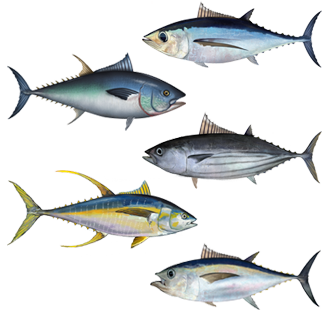
Can I Have a Can of Tuna?
Common names are essential for everyday references to economically important species of fish. For example, if I want a can of tuna fish, I don't go to the supermarket and ask for a can of Thunnus thynnus, because the store clerk would probably not know what I was talking about. I probably wouldn't even ask for a can of Atlantic bluefin tuna, which is the actual species of fish referred to in this example. When I do buy my can of tuna, there are several types of tuna (Yellowfin, Pacific bluefin, Blackfin or Albacore) that might be included in the can. These are all true tunas of the genus Thunnus, as mentioned above.
However, the tunas are a subgroup of the mackerel family, which also includes fish with such common names as bonitos, mackerel and Spanish mackerels. Even though these fish are placed in different genera, they are closely related to the tunas and so they are all placed in the same family.
Latin Names
When we get to the actual scientific name of each species of fish, Latin words are preferred to the Greek. A particular fish is defined by two Latin words; the first is capitalized and the second is not. The first Latin word refers to the genus, a scientific grouping that includes different species of similar organisms, which closely resemble each other. A good example are the five species of tuna, pictured above. They all fall into the genus of Thunnus, but use different Latin words to describe their species.
The Latin word Thunnus actually goes back to Ancient Greek and means to hasten or dart along. And in the case of the Bigeye tuna, we have Thunnus obesus. It is not hard to figure out that the second Latin part, obesus refers to being fat or obese.
A Saltwater Giant
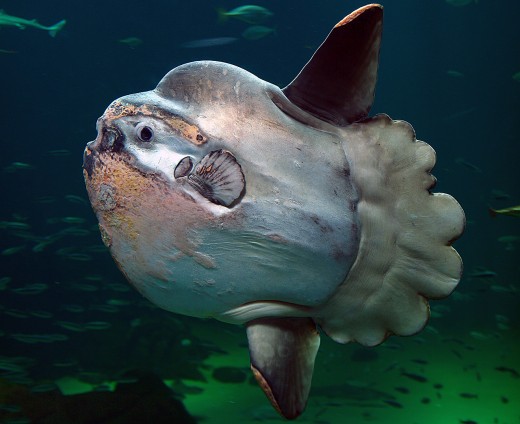
Two Very Different Sunfish
Sunfish is a common name that can be applies to both freshwater and saltwater species. Strangely enough, the freshwater varieties are very small, while the saltwater monster can weigh several tons and has a bad reputation of taking flying leaps into the air and on rare occasion crashing into boats. The leaping habit is a biological habit that is not completely understood, while any collision with aquatic commerce is only accidental.
Moreover, when we use the scientific names, we get Mola mola for the ocean sunfish. Meanwhile, the freswater sunfish (Centrarchidae) is a distinct family of North American fishes that include rock bass, largemouth bass, bluegill, pumpkinseed, and crappies. All total, there are almost 40 species in the sunfish family. Freshwater sunfish are sometimes referred to as panfish, a testimony to their small size and tasty flavor.
Little Biddy Boats and Big Sharks Don't Mix
Fish Taxonomy Is Not a Static Science
Over the past centuries, the study of the aquatic biosphere has lagged behind our investigation of the terrestrial environment. As a result, the study and classification of fishes is constantly coming across new specimens to collect and eventually place into the proper scientific category and be given a name. This is especially true as we probe the deeper portions of the Seven Seas.





